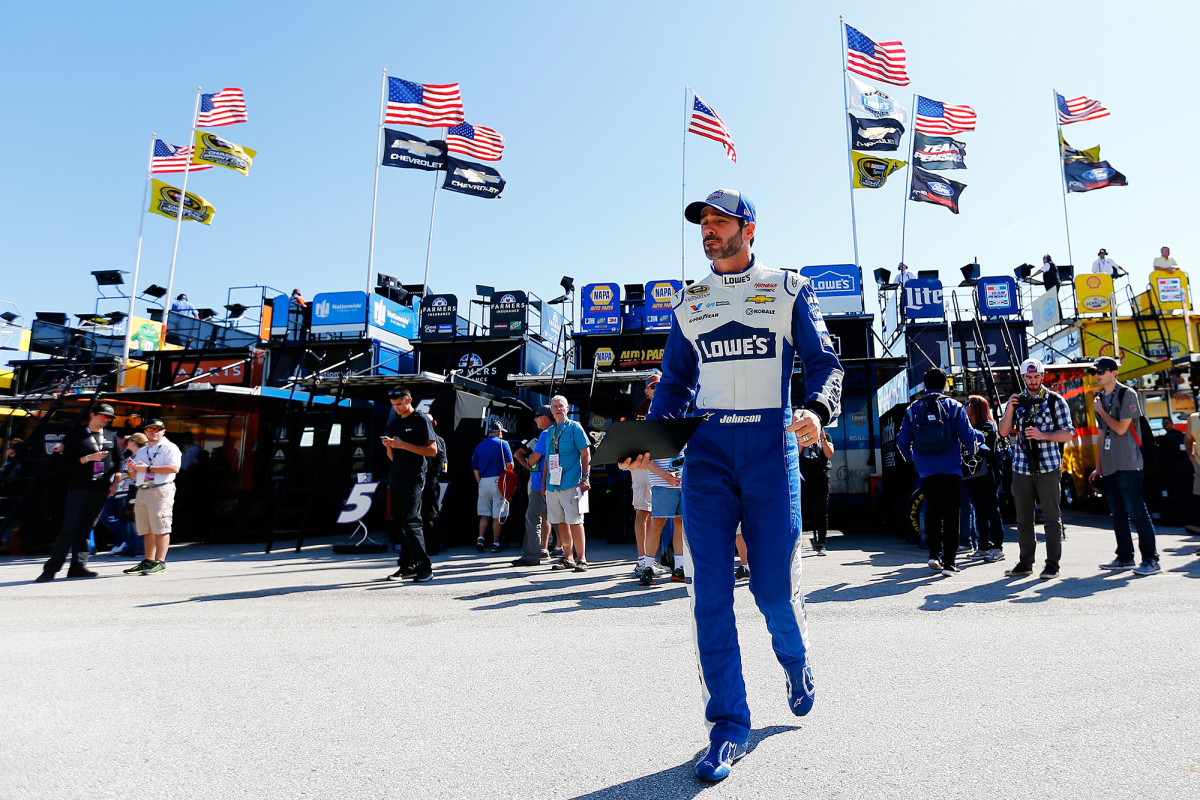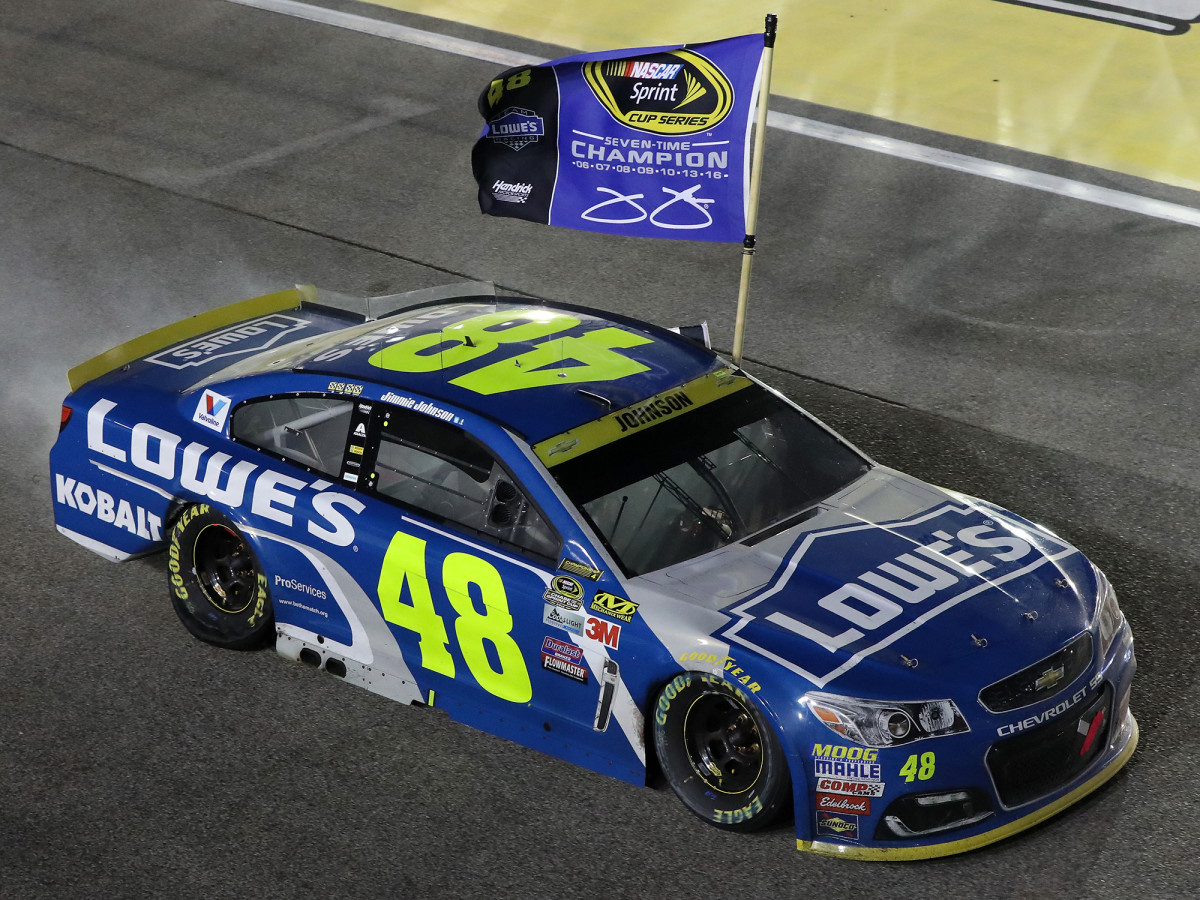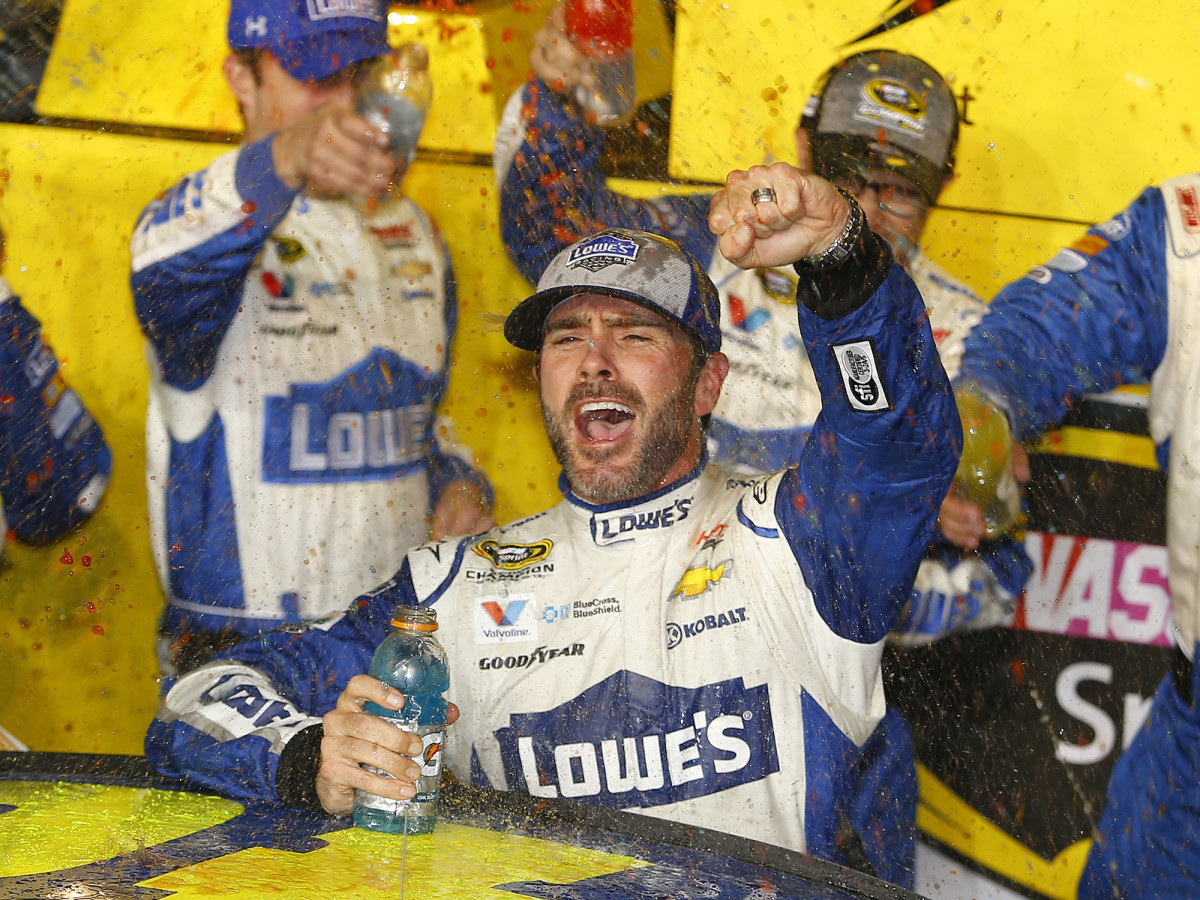Fridge Raider: Seven-time NASCAR series champ Jimmie Johnson eats for endurance

On and off the track, fuel is important for Jimmie Johnson. Though nutrition was part of the seven-time NASCAR Sprint Cup champion’s routine early in his career, it wasn’t until Johnson expanded his racing résumé to include triathlons and marathons that he became aware of the need for a balanced diet.
“I quickly realized that, when I was doing 2-3 hour workouts every day, I needed fat and carbs for fuel,” says the 41-year-old driver.
Johnson continues to prepare for his big races by applying lessons learned from his endurance sports career. Just last month he used a taper—a method of reducing the volume of training—to get his fitness and nutrition ready for the final race of the Sprint Cup season, at Homestead-Miami Speedway.
Of course, the sporting world has been slow to consider turning left for three hours an endurance sport. But wrestling a 3800-pound car around a track for three to four hours requires many similar skills. Led by stars such as Johnson, one of the fitness trailblazers on the NASCAR circuit, drivers have realized that a fast car relies on a fit body.
“I’ve pulled friends and other drivers into triathlon, cycling, and the fitness aspect,” Johnson says.
The next frontier may be nutrition, though it isn’t part of every driver’s toolbox—yet.
“For a lot of drivers, nutrition is the final piece that they need to figure out, it’s an unspoken thing that many do not do,” he says. “Just last week I was talking to a young driver about the importance of diet.”

For Johnson, the long racing season gives him the structure necessary to follow a training regimen. Diet has also become a big part of that routine, one that notably includes cycling, running and triathlons.
“During the season my mind is on, it keeps me eating well and exercising more,” says Johnson. He also uses his diet to take care of another attribute critical for driving: his eyesight.
Fridge Raider: Carbs are king for Tampa Bay Lightning goaltender Ben Bishop
“I try to follow an anti-inflammatory diet and because of that don’t eat a lot of dairy,” he says. “I do it because of the benefits of an anti-inflammatory diet on vision and eyesight and I’ve seen the benefits. It’s a huge factor with driving.”
Unlike many other athletes, Johnson doesn't let his constant travel to different venues send him off the nutritional track. Many others frequently struggle to find healthy food on the road, but eating healthy is actually easier for Johnson when traveling. That’s because Johnson’s fridge travels with him.
“When I’m racing, I stay in a bus at the track, and the fridge and cupboards are full of good food,” says Johnson, who after practicing comes back to a healthy trackside meal. “Usually I have a sandwich or wrap with chicken and brown rice waiting for me when I’m finished.”

To help him hit his nutritional goals, Johnson’s fridge on the bus and at home is always stocked with eggs, chicken, fruit, Kombucha and Gatorade (a sponsor). Despite his success on the racetrack, Johnson admits a weakness for late night trips to his fridge.
“At 2 a.m. I find myself going to the fridge for some ice cream or pizza,” he says. Born in California, Johnson also has a love of avocados, another late night snack often paired with quesadillas and salsa. It’s a habit that Johnson admits becomes more common during his short offseason, “I need to relax a little and take a little time off from the structure,” he says.
As important as food is to Johnson, race day survival depends more on what he drinks. Encased in four layers of clothing and a helmet, Johnson spends three to four hours broiling in a 115-degree cockpit while racing, making hydration critical. He likens the experience to exercising in thick corduroy pants and a sweater.

“Hydration is the toughest thing and I’ve been fortunate to be sponsored by Gatorade. They brought me to the Gatorade Sports Institute to calculate my sweat rate,” Johnson says. “They’ve helped big time because I learned that I’m a salty sweater and need more electrolytes than average.”
To help him stay hydrated, his car has a Gatorade In-Car Drinking System that supplies him with three liters of Gatorade Endurance, easily accessible through a tube in his helmet. Supplemented with bottles when he pit stops, Johnson will sometimes drink four to five liters of fluid during a hot race.
Johnson’s attention to diet has fueled his success both in NASCAR and as an endurance athlete.
“It’s easy to get off a couple degrees but when I’m eating right, I just feel better,” he says.
